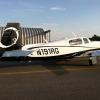Whats normal Oil temp on ovations
-
Members Online
- buddy
- ArtVandelay
- Deb
- LD5757
- Oliver
- LANCECASPER
- Austintatious
- ProtoFly
- MaxwellSmart86
- Stan
- RoundTwo
- tankles
- Justin Schmidt
- KSMooniac
- kortopates
- wolfbyte
- ftresdtrswhes45
- phrogpilot73
- Paul Thomas
- bcg
- N.Nelson
- philiplane
- toto
- redbaron1982
- Kevin Westbrook
- Gilt
- shawn-201zb
- TX-Champ
- Rmnpilot
- Grumpy
- DXB
- Will.iam
- alextstone
- FlyingDude
- KLRDMD
- Jerry 5TJ
- Sue Bon
- hammdo
- corn_flake
- kris_adams
- Adverseyaw0317
- hobbit64
- Danb
- Skates97
- Echo
- RobertB
- 201er
- Niko182


Recommended Posts
Join the conversation
You can post now and register later. If you have an account, sign in now to post with your account.